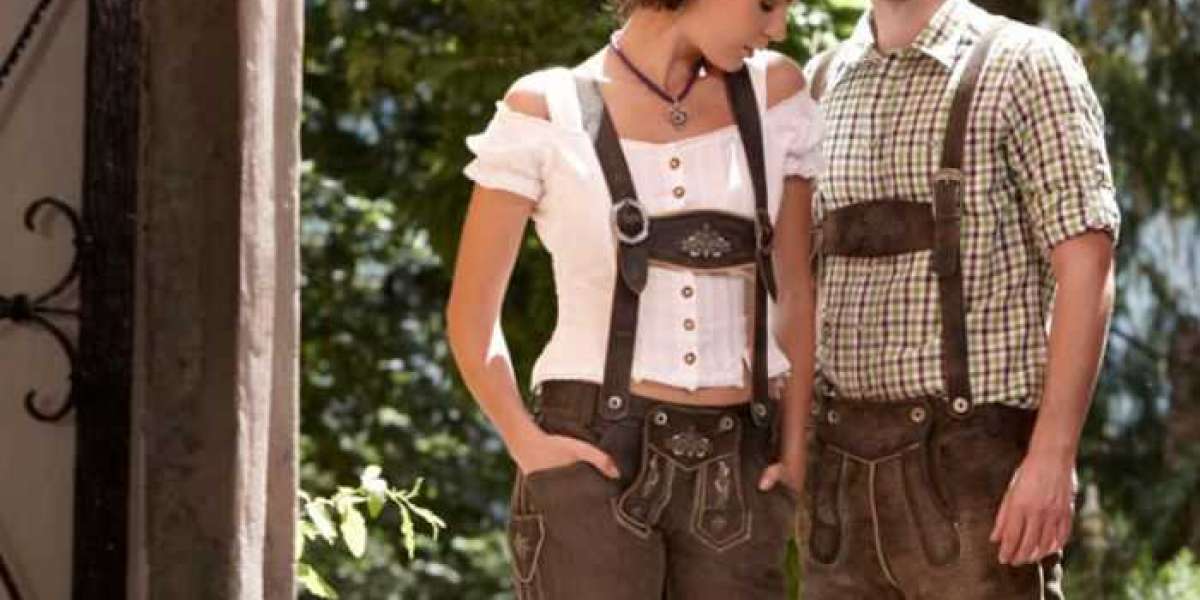Oktoberfest—the world’s largest folk festival—has long been synonymous with Bavarian pride, hearty laughter, and the clinking of overflowing beer mugs. Yet one of the most iconic symbols of this cultural celebration is the traditional clothing: lederhosen for men and dirndls for women. Worn with pride, these garments are more than just costumes; they’re a living connection to heritage. But over time, Oktoberfest clothing has evolved. It has been reimagined to fit modern tastes while preserving the essence of tradition.
The Roots of Tradition: Lederhosen and Dirndls
Oktoberfest clothing traces its roots back to the rural Alpine communities of Bavaria and Austria. Lederhosen were originally worn by working-class men—farmers, hunters, and craftsmen—due to their durability and practicality. Dirndls evolved from the maidservant’s attire, with full skirts and snug bodices designed for movement and modesty.
Both styles reflect function, but also identity. They signaled one’s region, occupation, and even social class. At the heart of this clothing is a sense of belonging—a way for people to express who they are and where they come from.
Fashion Meets Folklore: The Modern Twist
Fast-forward to the 21st century, and Oktoberfest clothing has experienced a fashion-forward transformation. Today’s dirndls come in varying lengths, colors, and fabrics—from bold satin bodices to velvet aprons and even lace overlays. Designers have introduced modern fits, playful patterns, and creative embellishments, making dirndls a stylish statement piece.
Lederhosen have also embraced change. Slimmer cuts, decorative stitching, and lightweight leathers make them more wearable for different body types and modern preferences. Some are even paired with stylish sneakers or tailored shirts, blending old and new effortlessly.
Preserving Tradition with Purpose
Despite the changes, the soul of Oktoberfest clothing remains intact. Most modern adaptations still respect the core design and materials: leather for the lederhosen, and classic blouse-apron-bodice sets for dirndls. Traditional elements like embroidery, edelweiss buttons, and Bavarian motifs are proudly preserved.
Even small details—like the side you tie your apron on (a signal of marital status)—remain significant. These features ensure that as fashion evolves, the cultural meaning isn't lost.
Cultural Pride in Every Stitch
Wearing traditional Oktoberfest clothing isn’t just about dressing up. It’s about honoring history and connecting with a collective cultural spirit. For many, it’s a way to celebrate their roots or show appreciation for a region’s rich heritage. And for tourists, donning these outfits is a fun, respectful way to take part in the festivities.
In fact, many locals prefer to shop from authentic, heritage-focused brands that craft their clothing using time-honored techniques and high-quality materials. These garments may cost more—but they last longer and carry deeper meaning.
The Global Influence of Oktoberfest Fashion
As Oktoberfest-style festivals pop up across the globe—from America to Australia—traditional clothing continues to evolve. International demand has inspired designers to cater to a wider range of styles, body shapes, and budgets. From affordable costume-style outfits to high-end, handcrafted ensembles, there’s something for everyone.
Social media has also played a role. Influencers and fashion bloggers now showcase how to style dirndls and lederhosen with trendy accessories, chic hairstyles, and even modern makeup looks—making Oktoberfest fashion more accessible and creative than ever before.
The Future of Tradition
As the world becomes more globalized, Oktoberfest clothing stands as a beautiful example of how tradition and innovation can coexist. The ability to modernize while staying true to its roots is what keeps the spirit of Oktoberfest clothing alive and thriving.
Whether you're dressing in a centuries-old design passed down from relatives or a freshly tailored ensemble made for your first festival, the meaning behind the clothing remains the same: celebration, connection, and pride in culture.




